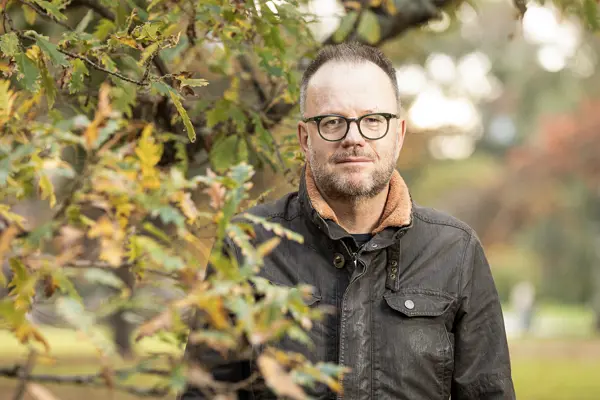
Audio Artist Patrick Cronin's Succulent Sounds
Sonica Botanica
One of Melbourne’s most remarkable gifts can be enjoyed for free. Nothing quite satisfies the soul like the visual feast provided by rich autumnal hues or the rewarding crunching of a carpet of golden red and amber leaves beneath the feet. Standing in the shadow of seemingly ancient oak trees at Melbourne Gardens is a pleasure treasured by young and old. We chat with sound artist Patrick Cronin to hear about Sonica Botanica and find out what went into collecting the sounds and stories behind Oak Lawn.
What was your first interaction with the Botanic Gardens?
I was born in regional Victoria. My first memories are coming to see a performance of Wind in the Willows. I felt like I had stumbled upon something which I couldn’t believe existed in Melbourne. There is an incredible joy in coming back to the Gardens now regularly.
What led you to use sound as an artistic medium?
As a musician, I’ve always played in bands and have had a long interest in evocative sound effects in film. I was part of a group called the Spaghetti Western Orchestra, which played the film soundtracks of Ennio Morricone. I enjoy how the combination of music and sound can support the emotion of a film.
Through working in community and participation events as a producer, I saw the desire for deeper connections to a public space. I like the idea of marrying a participatory experience with sound, which is very immersive and can be a profoundly personal experience.
What motivated you to tell the story of plants through sound?
I realised that there were no audio guides as you would find in a museum or a gallery. In a past project, I had interviewed people in regional Victoria - collecting stories from locals and weaving them into a soundscape that spoke about their place or town; I thought I could bring this approach to the Gardens.
With a plethora of specimens at the Gardens, it would be challenging to speak to each unique plant and its provenance. Speaking particularly about a plant’s origins or specifics wasn’t going to click with everyone, so Sonica Botanica was always going to be about people’s relationships to a particular location in the Gardens.
What did you learn about the spaces in which Sonica Botanica was recorded?
At first glance, Oak Lawn could be seen as just trees and grass. After a while, you can observe how people interact with the space, perhaps playing in fallen leaves or watching children play on the latest incarnation of the White Oak.
People have favourite places in the Gardens and love returning to them. A family has been returning to Oak Lawn for their Christmas celebrations for 35 years. This special space is also the start of the Aboriginal Heritage Walk as well as Forest Therapy. There are many layers that are fascinating.
What has the experience taught you?
When people are in nature, they often become quite reflective. There’s something in nature that perhaps gives people a pause for reflection and allows them to think about their place in the world.
Sonica Botanica taught me patience. I’d realised I didn’t need to have all the answers when I started. The themes emerged from people talking and I had to trust the time it takes to tease out these conversations and that something meaningful will emerge.



